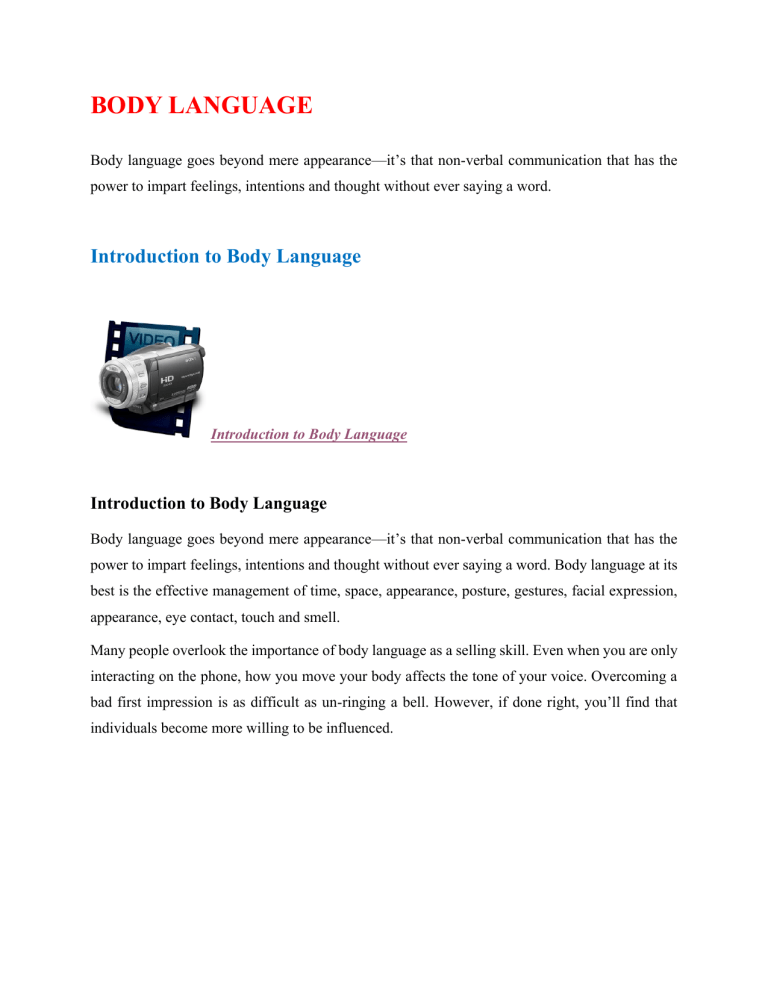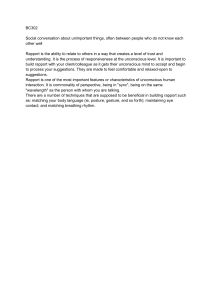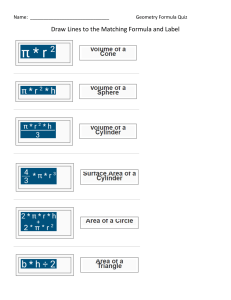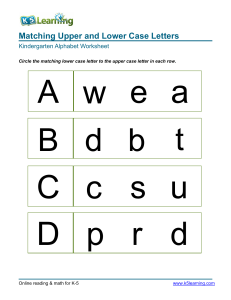
BODY LANGUAGE Body language goes beyond mere appearance—it’s that non-verbal communication that has the power to impart feelings, intentions and thought without ever saying a word. Introduction to Body Language Introduction to Body Language Introduction to Body Language Body language goes beyond mere appearance—it’s that non-verbal communication that has the power to impart feelings, intentions and thought without ever saying a word. Body language at its best is the effective management of time, space, appearance, posture, gestures, facial expression, appearance, eye contact, touch and smell. Many people overlook the importance of body language as a selling skill. Even when you are only interacting on the phone, how you move your body affects the tone of your voice. Overcoming a bad first impression is as difficult as un-ringing a bell. However, if done right, you’ll find that individuals become more willing to be influenced. Presenting a Professional Image Presenting a Professional Image When communicating face to face you have 1/24th of a second before others judge you based on the way you look and the way you carry yourself. At this time others will have determined if they have a positive image of you in their mind and if you are someone they want to do business with or not. Body language is also important when you are dealing with people on the phone – your body language will resonate in the tonality of your voice. Wrap Your Package Wrap Your Package How you “wrap your package” can affect your life on every level—business and personal. That’s why it’s important to dress yourself just as if you were giving a special gift to someone that is important to you—using quality paper and ribbon versus that crumpled paper grocery bag and twine. In order to succeed at anything it’s important to remember: Always dress for success. Never dress for failure. How good you look determines how good you feel and will affect how well you perform or meet your outcome. Strive to look sharp, and not too frilly or ostentatious. Most importantly, for men and women alike, dress in a style that suits you, so you feel comfortable with what you’re wearing. Handshakes Handshakes How you shake someone’s hand says volumes about who you are. Are you aggressive, meek, passive-aggressive, confident, certain or uncertain? How you shake someone’s hand can either ‘give you away’ or further establish the image you want to project. In a business setting, the best handshake is your basic, natural handshake, otherwise known as the “co-operators” handshake. Body Language Recap Body Language Recap Remember that Body Language is an important element of non-verbal communication that has the power to impart feelings, intentions, and thought, without ever saying a word. You need to consistently be conscious of the impression you create by having purposeful body language and presenting a professional image. Advanced Body Language Strategies Matching and Mirroring Matching and Mirroring Matching and Mirroring involves using all three forms of communication: words, tonality, and body language, in order to develop massive rapport with another person. By closely matching (not copying) and mirroring the other person’s communication style (words, tonality, and body language) you have the opportunity to enter their world and see things from their perspective, feel the way they do, and get a better understanding of where they are coming from; and as a result, create an unconscious and powerful level of rapport that enhances the whole relationship. The key is to not make it obvious by changing positions the moment they do. Instead, wait a few seconds, move around a bit, and then match a portion of their posture such as crossing your arms or legs, or putting your hand on your hip. This is a very powerful technique for gaining rapport because it operates on an unconscious level. Matching and mirroring is all about getting into the other person’s world so that you can lead them through the sales process. You enter at the same level they are, and then slowly move that level up or down depending on where you are in the presentation or close. When you’re reaching out to prospects on the phone, you obviously can’t use body language in the same way. Instead, focus on matching and mirroring through tonality and words, paying special attention to pitch, energy level, and tone of voice. As mentioned previously, in the absence of physical communication, 9% of your impact comes from your words and 91 % comes from your tone. Some people find the idea of matching and mirroring another person foreign and uncomfortable. To overcome any uneasiness, realize that matching and mirroring is a natural way of building rapport and that you’re likely doing it unconsciously every day with your close friends and loved ones. You can gradually increase your conscious use of these skills at a pace that’s comfortable for you. Mastering and ethically using these skills will only serve to create positive feelings and responses in both you and your prospects. Pacing and Leading Pacing and Leading Pacing and Leading is a set of Neuro-Linguistic Programming (NLP) techniques that can be very powerful when applied to influence and persuasion. This is because it compels the person to unconsciously set up a “yes set” in their mind, without ever actually having to verbally say “yes” to you. If done properly and ethically, pacing and leading will dramatically increase the likelihood that your prospects will respond to and accept your suggestions. The key to pacing and leading is to make sure it’s a comfortable conversation; one that supports the other person in moving you toward their desired outcome. Action Planning “They may forget what you said, but they will never forget how you made them feel” – Carl Buechner Note down at least three actions that you are going to commit to based on what you have learned in this section. These should be things that you are going to do IMMEDIATELY to put your learning into action. Commit to these by choosing to share with your Sales Manager, Coach or peer. Remember you can also use notes to capture some of the key take-away points for you from this section. Tonality and Body Language Close Tonality and Body Language Close The ultimate aim is to get into conscious and unconscious rapport, and then maintain this by effective tonality and appropriate body language. It’s important to recognise dips in rapport throughout conversations and work to build rapport back to an even higher level.


